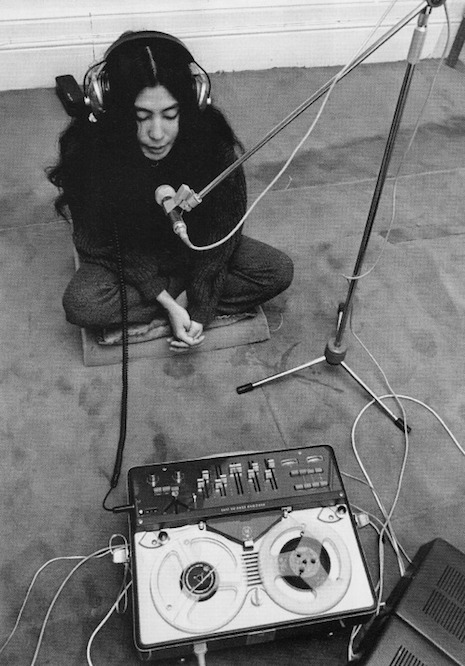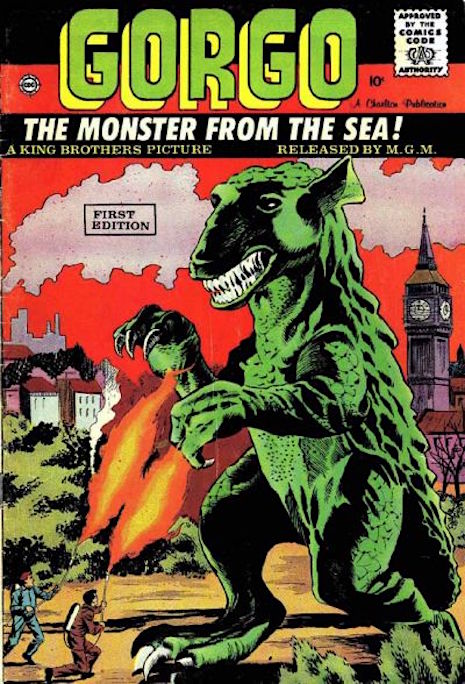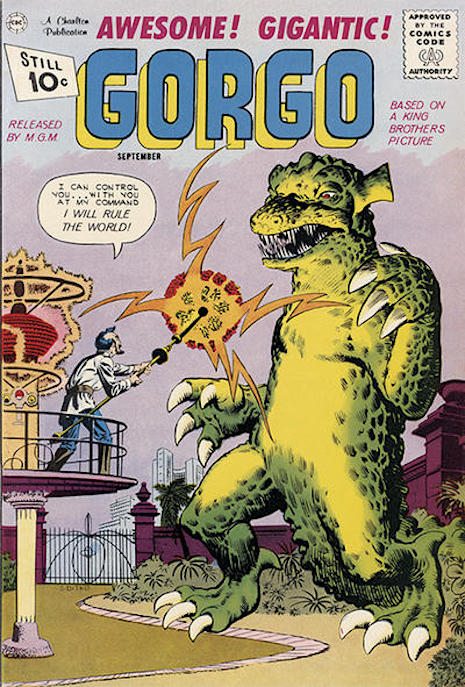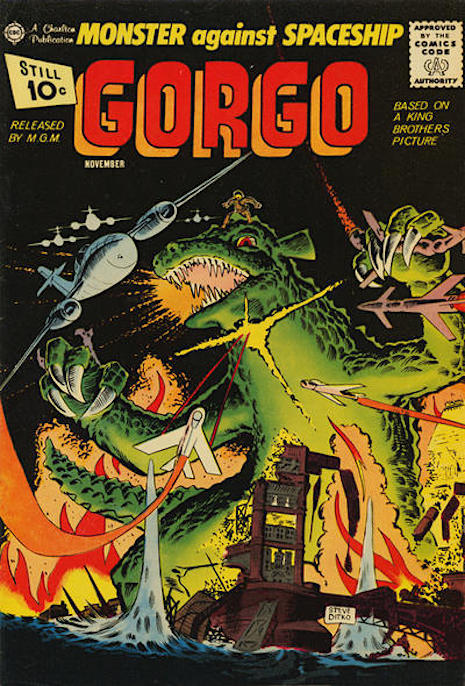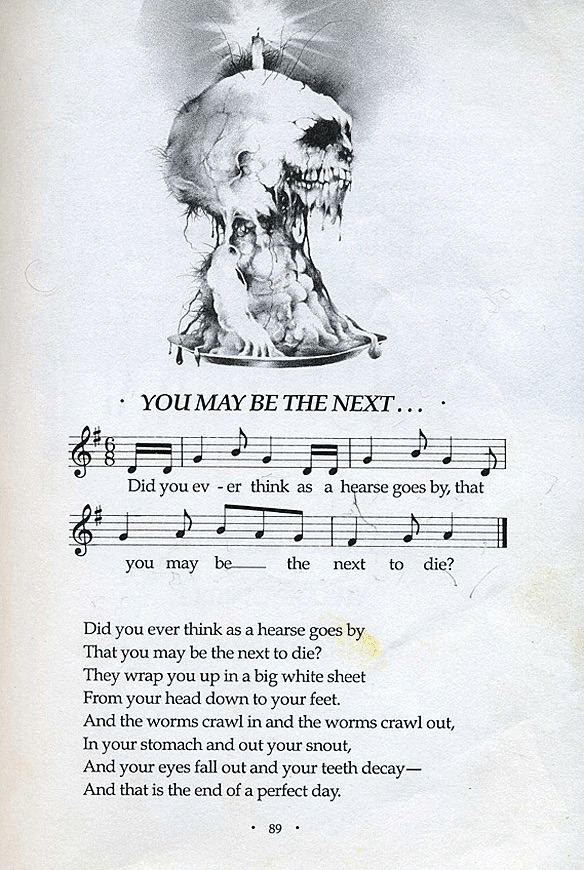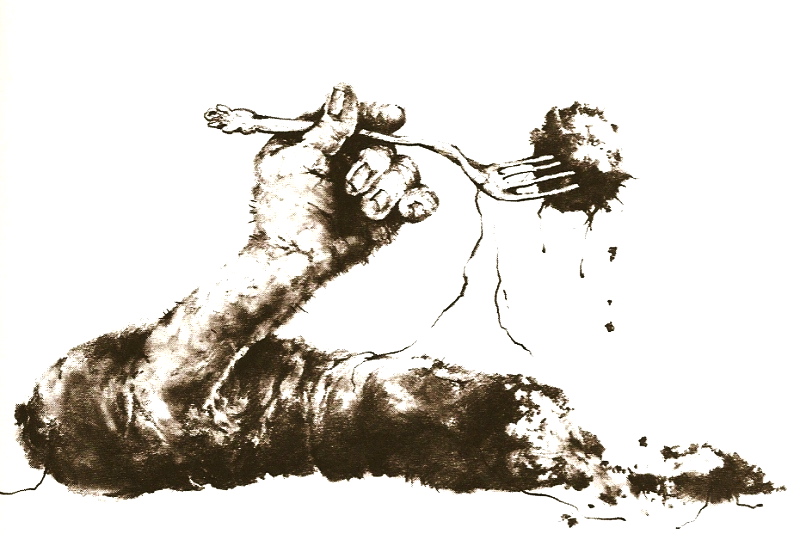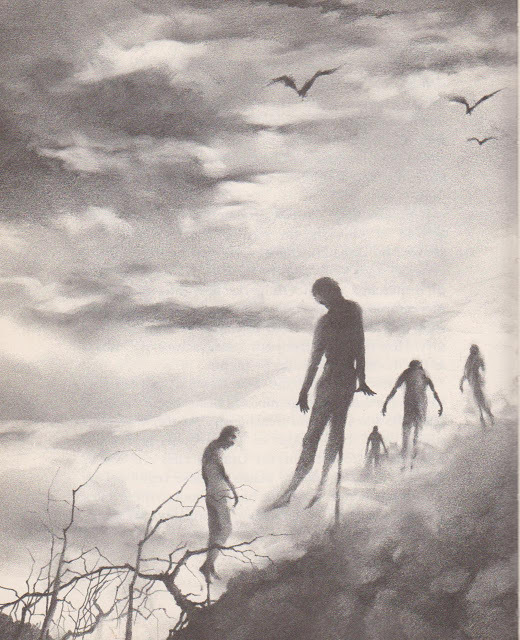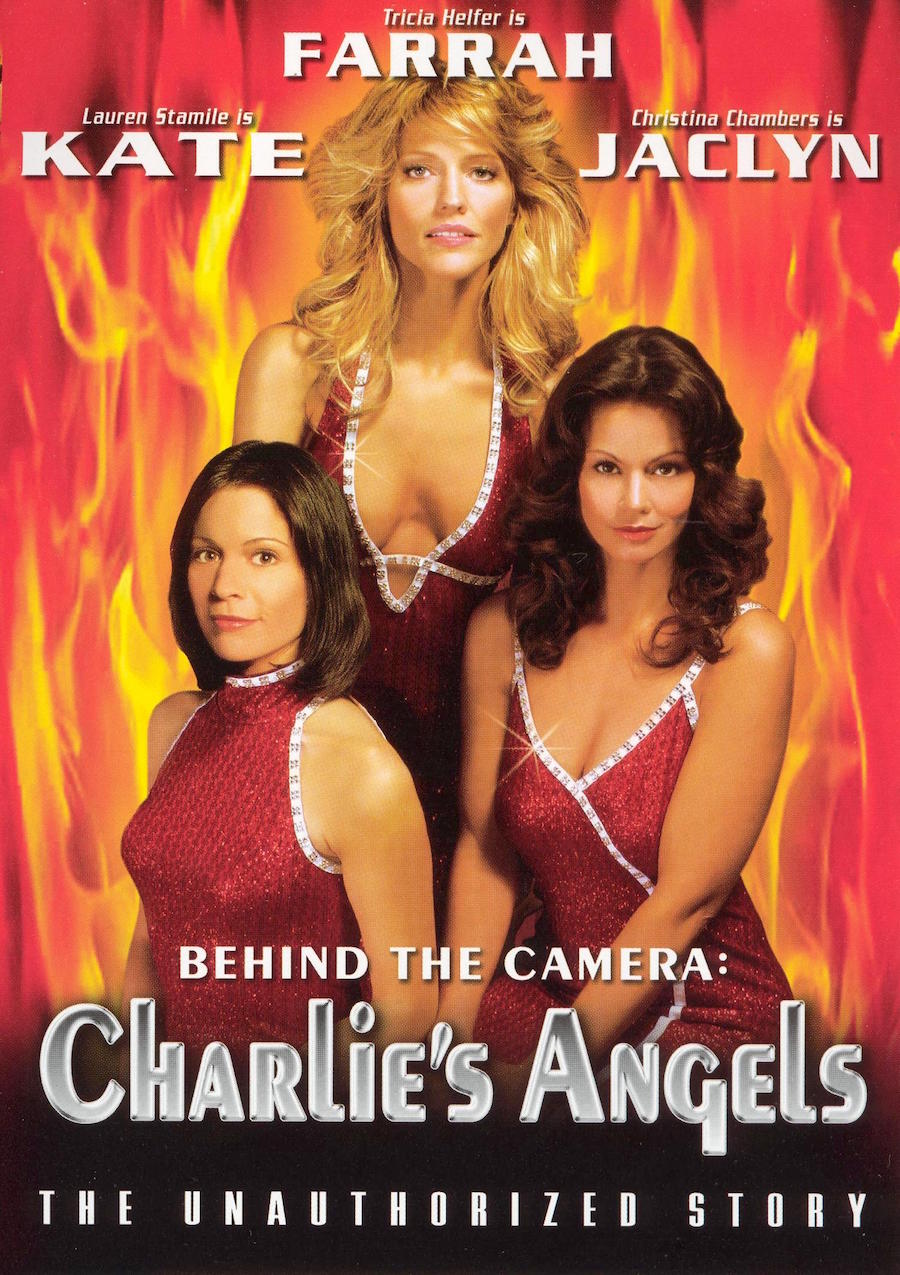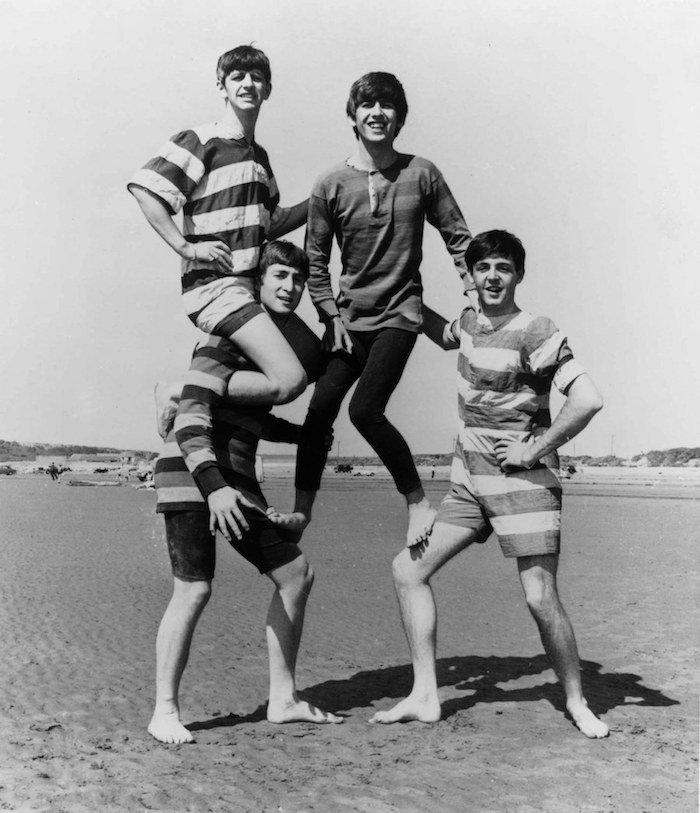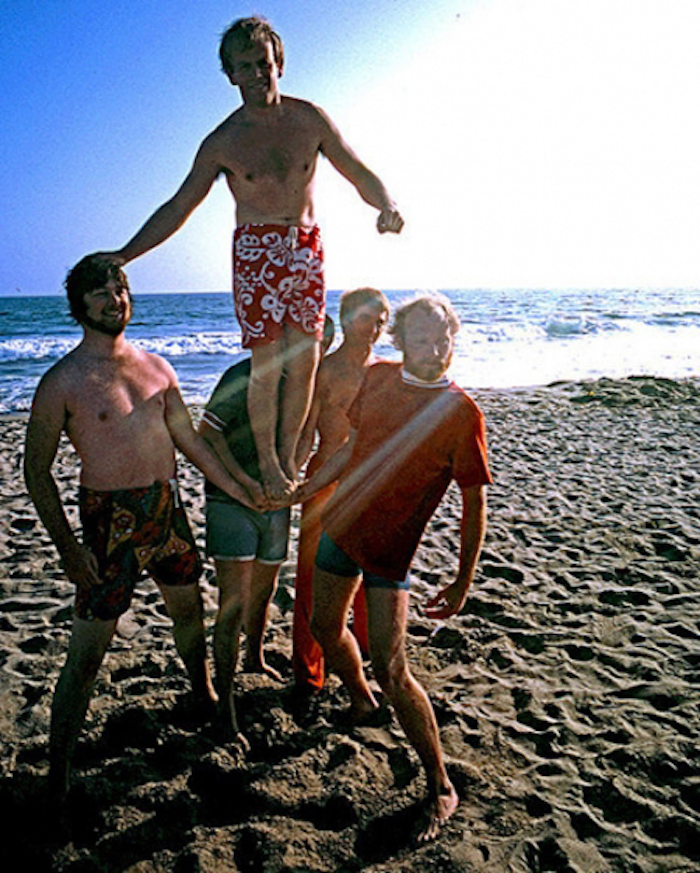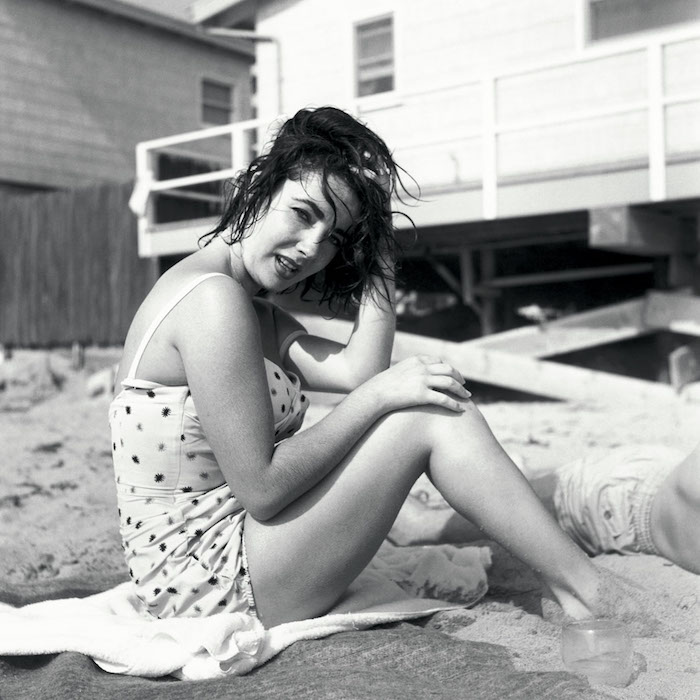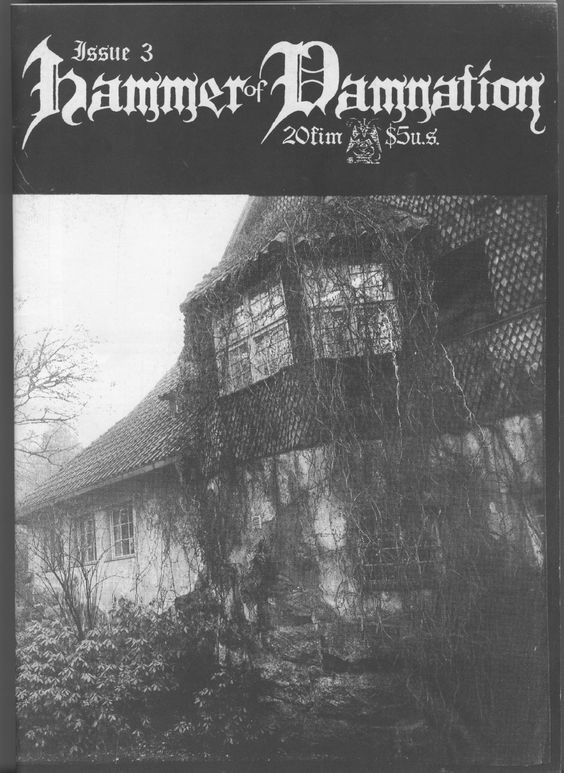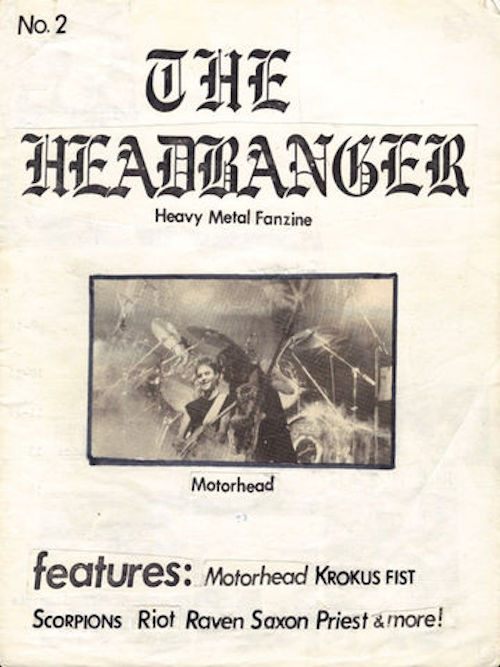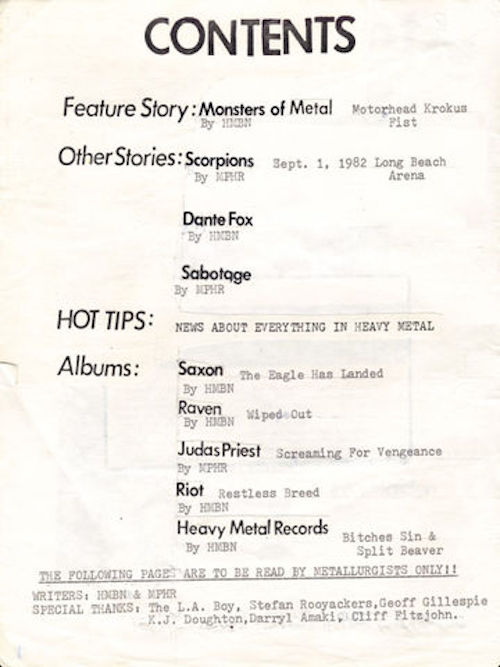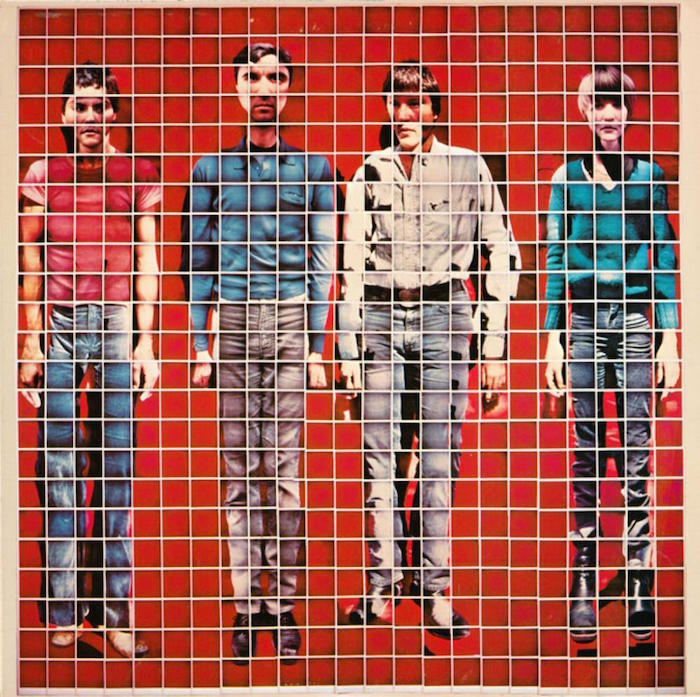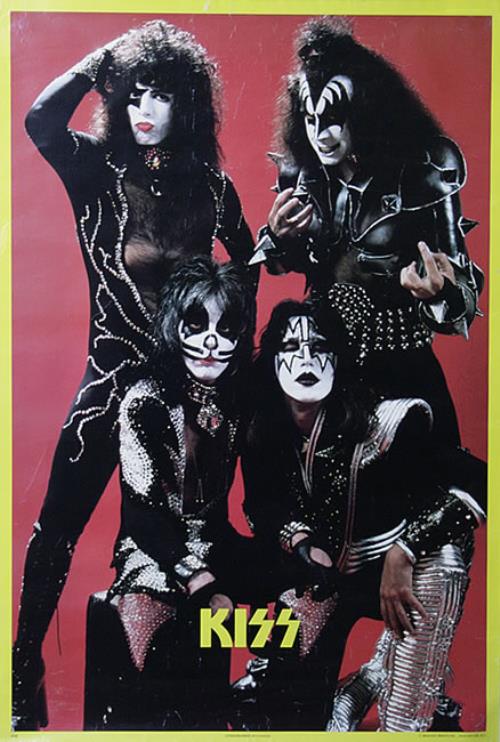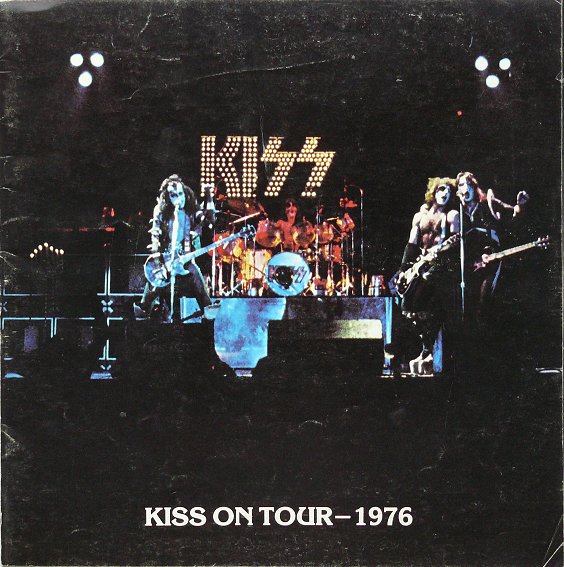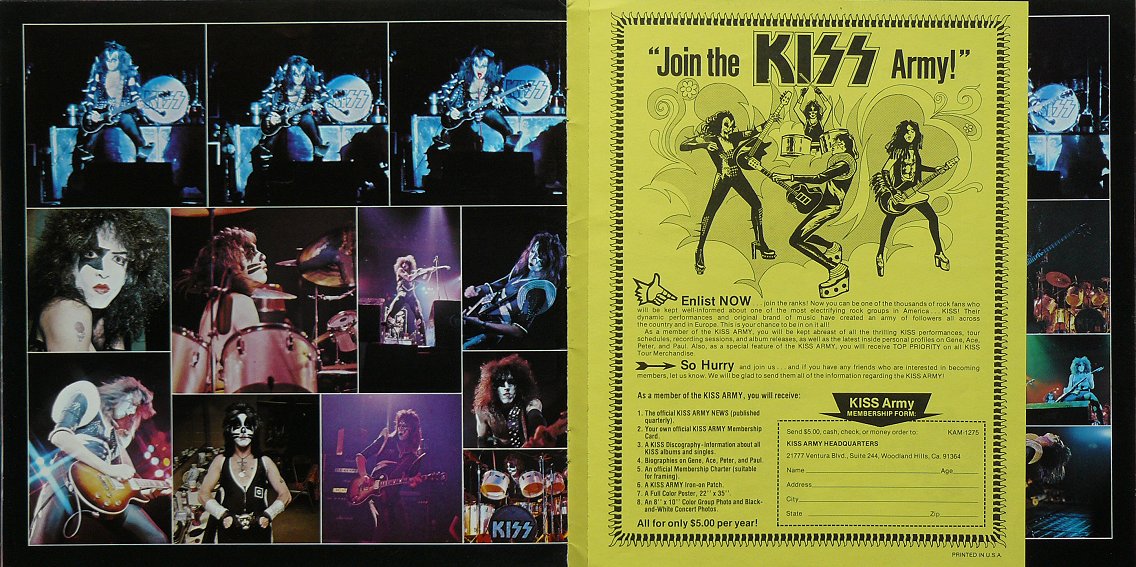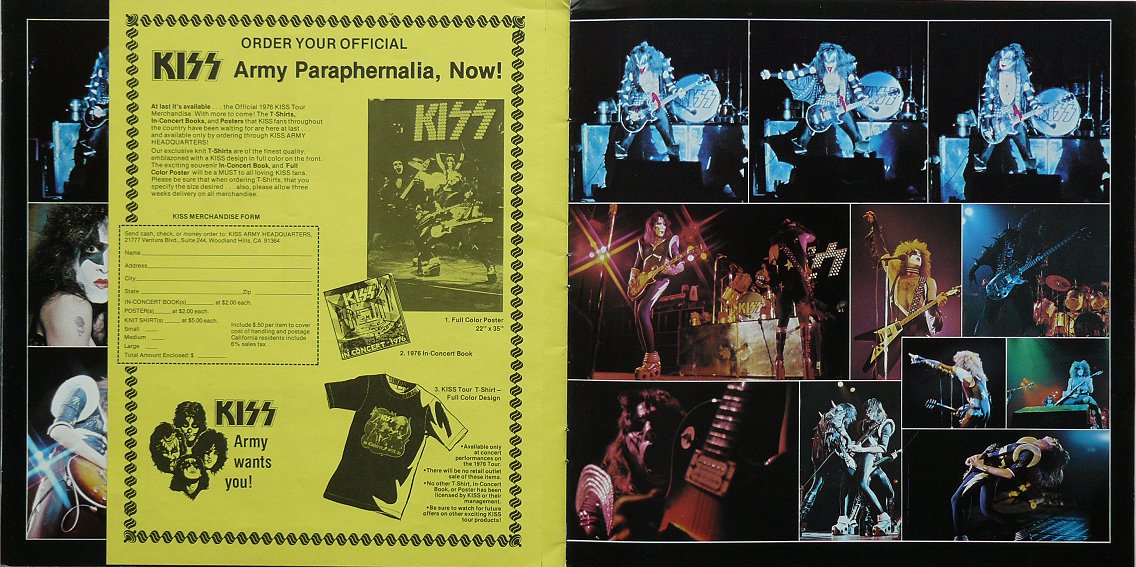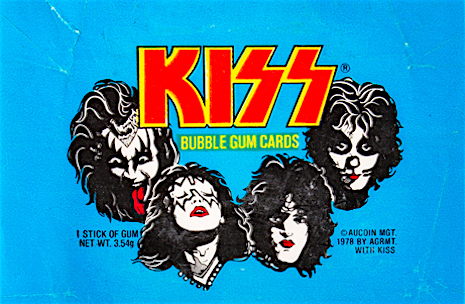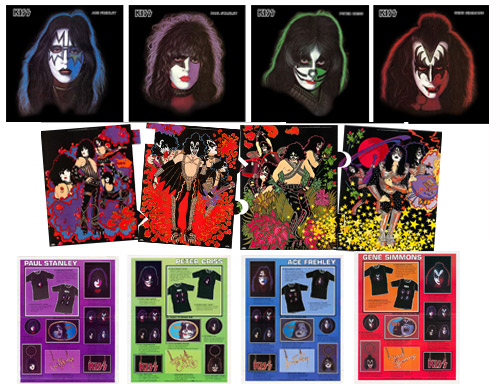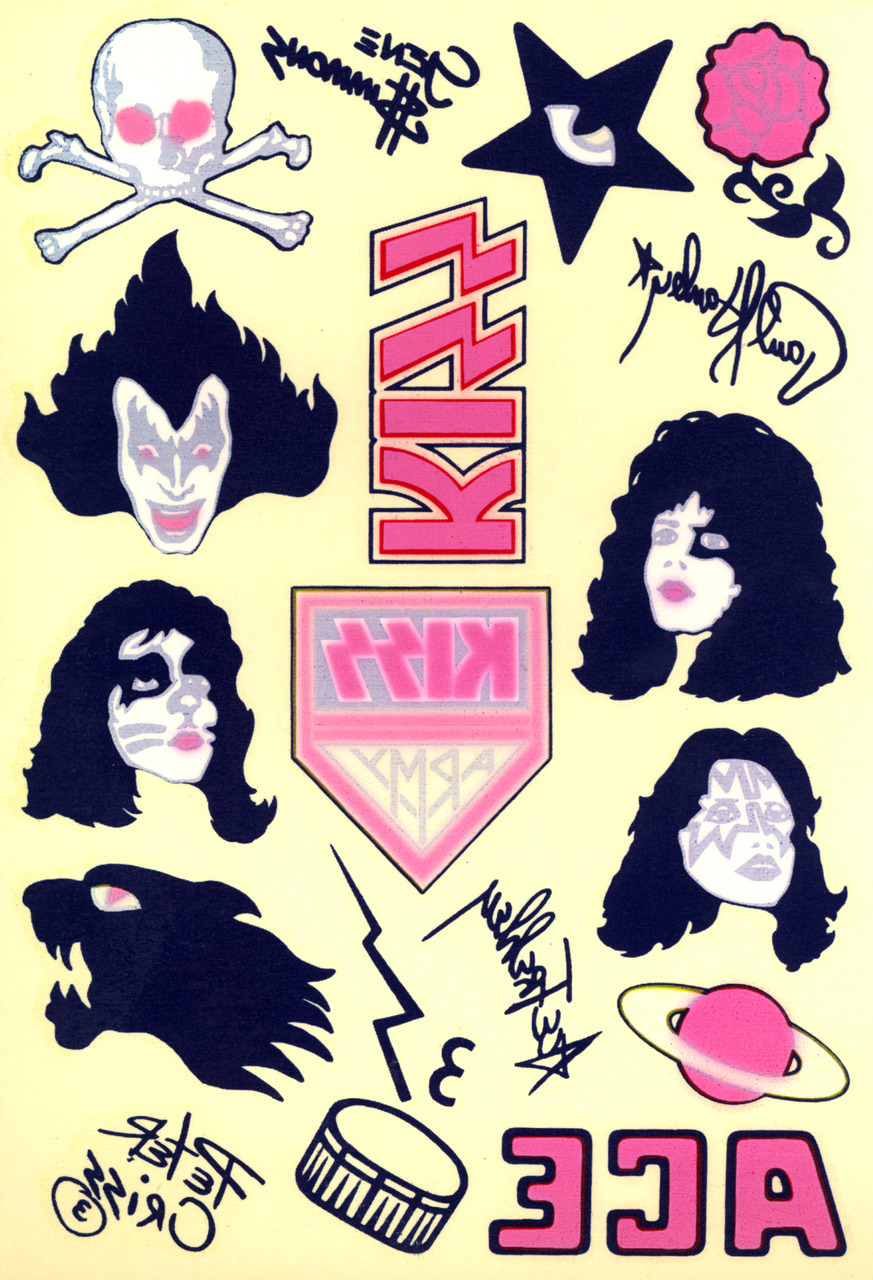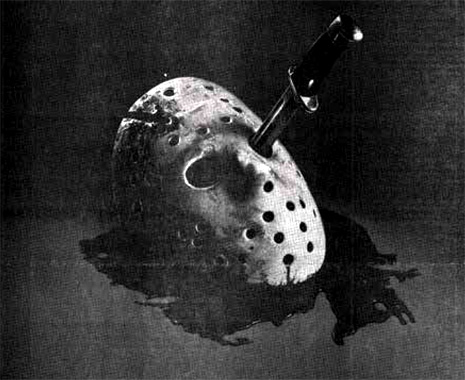
The ongoing triumph of digital is pushing into the grave many art forms once so ubiquitous (and tethered to low commerce) we hardly think of them as arts. Packaging art dives into decline as physical media formats become obsolete; screen printed concert posters become a pricey commodity-fetish item as Facebook becomes every promoter’s kiosk. Somehow, and encouragingly, event postcards continue to thrive, but really think about this—when was the last time you decided to see a movie or buy recorded music based on a newspaper ad?
Longtime Fangoria editor Michael Gingold remembers when the local daily was THE way to keep up on movies, and in fact, it was the lurid daily print ads for trash horror films—rendered all the seedier by the way cheap black ink used to block up on cheap pulpy newsprint—that sparked his lifelong interest in the horror genre. Gingold even kept a scrapbook of them, and eventually published them in a xeroxed ‘zine called Scareaphenalia.
Arranged on a desk in the back of my junior high homeroom was the communal stack of Daily News for teachers to pick up. There were always a couple of ’em left over, and the first Friday of that month I grabbed one and flipped through to the movie section. There they were: boldly arresting ads for Richard Franklin’s Patrick and David Cronenberg’s The Brood, both opening that day. I was vaguely aware of Cronenberg’s name, but otherwise, these films were a mystery to me. All I knew for sure was that I wanted to see them both.
Although I didn’t get to, at least not at the time, I was so enthralled by those ads that I cut them out of the paper and saved them. And every Friday thereafter, I’d grab a leftover Daily News edition and scour it for whatever lurid gems might be advertised in its pages. Any that I found, I clipped and added to my growing collection, and soon I was doing the same with the occasional bigger genre movie announced in The Times. By the end of the year, assembling those ads had become an ongoing passion project.
The foregoing quotation is from Ad Nauseam: Newsprint Nightmares from the 1980s, a new book that reproduces Gingold’s collection, with his annotations, and excerpts from contemporary reviews. His annotations are insightful, naturally, but the inclusion of reviews was a wonderful choice—it’s interesting to be reminded that while gore-operas like The Driller Killer, The Evil Dead, and Friday the 13th are regarded as classics which boast undying (sorry) cult followings, such films were excoriated in their day by critics who practically tripped over each other in their rush to condemn the films’ violence and lord their self-presupposed moral superiority over the genre’s fans. Even A Nightmare on Elm Street received mixed reviews that grudgingly praised its creative premise, wit, and atmospherics, as they went ahead and condemned it anyway, because a slasher film simply couldn’t be offered unqualified praise. (By the time its sequel came out, critics seem to have figured out the point.) Interestingly though, of all the reviews reproduced in Ad Nauseam, astonishingly few take the genre to task for its notorious misogyny—this was the era, after all, in which the murder-as-punishment-for-female-sexuality and “final girl” tropes were codified, and while young women’s suffering was typically dwelt-on in mortifying detail, the psychotic killers themselves sometimes went on to become the “heroes” in long-running and profitable franchises.
Ad Nauseam’s publisher, 1984, were extremely cool about letting us reproduce a generous sampling of Gingold’s collection. We’ve eschewed the bigger-name films in favor of the book’s more endearingly trashy offerings—you’ve seen the poster for Halloween a million times by now anyway, right?

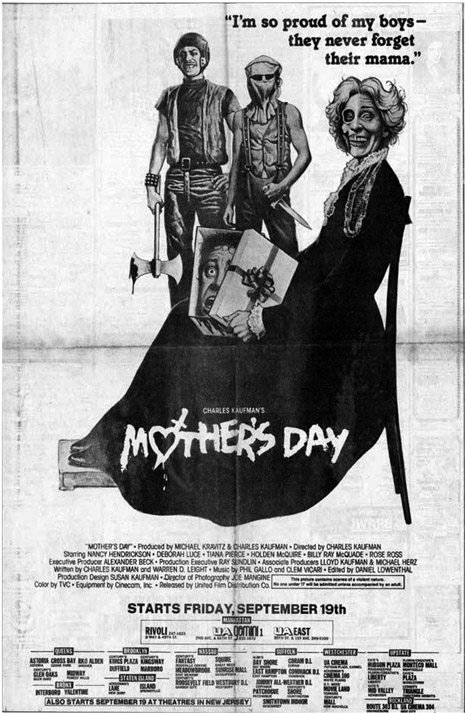
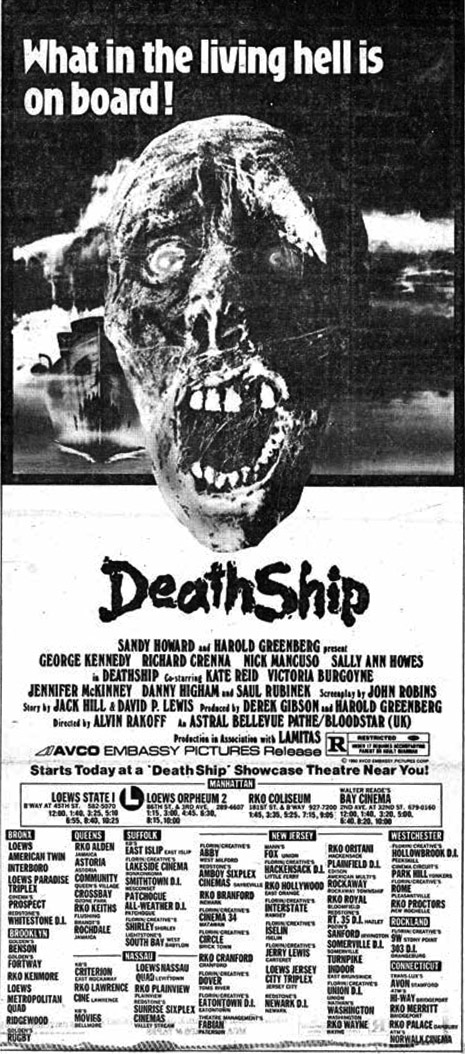
Many more after the jump…






